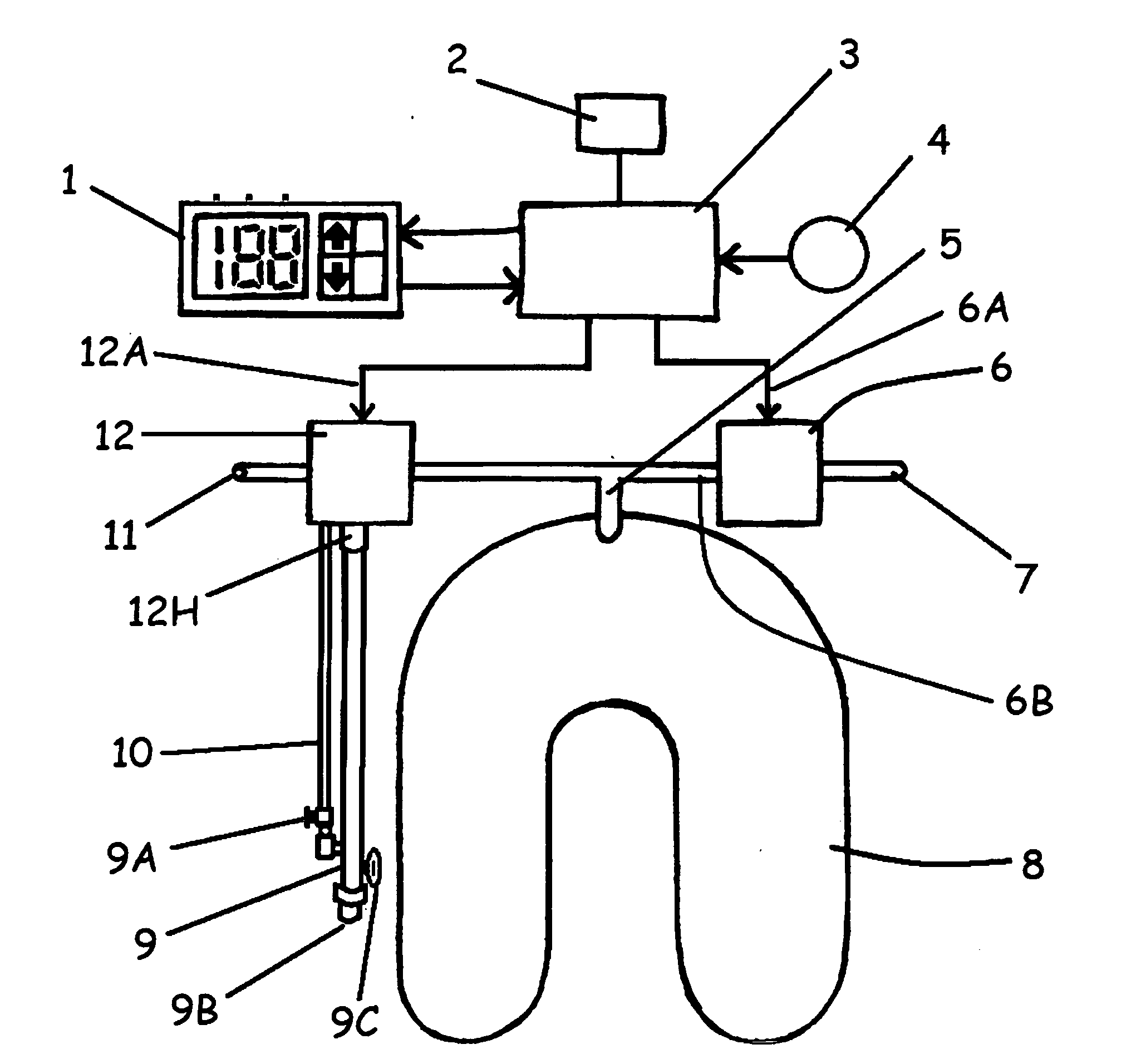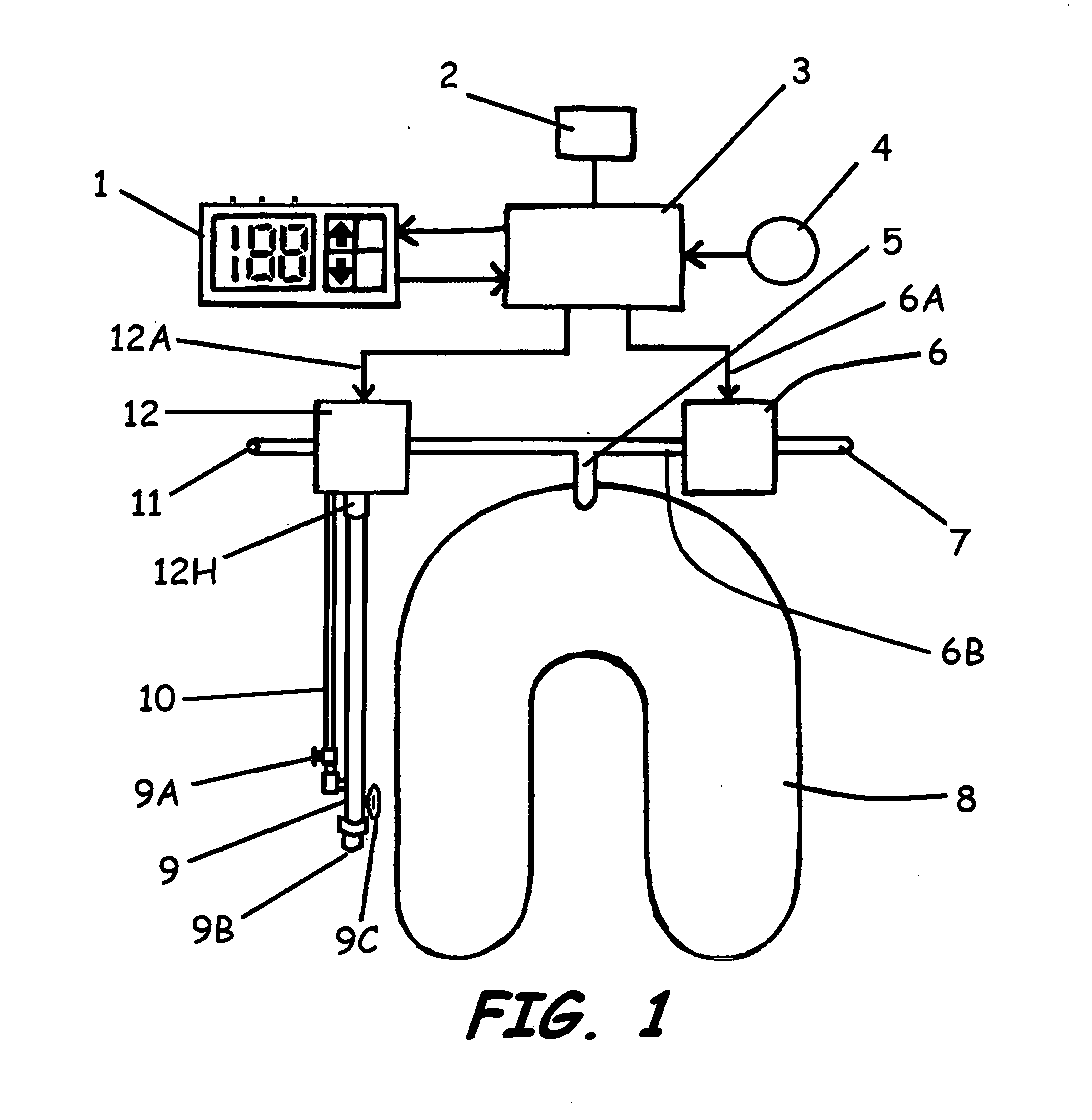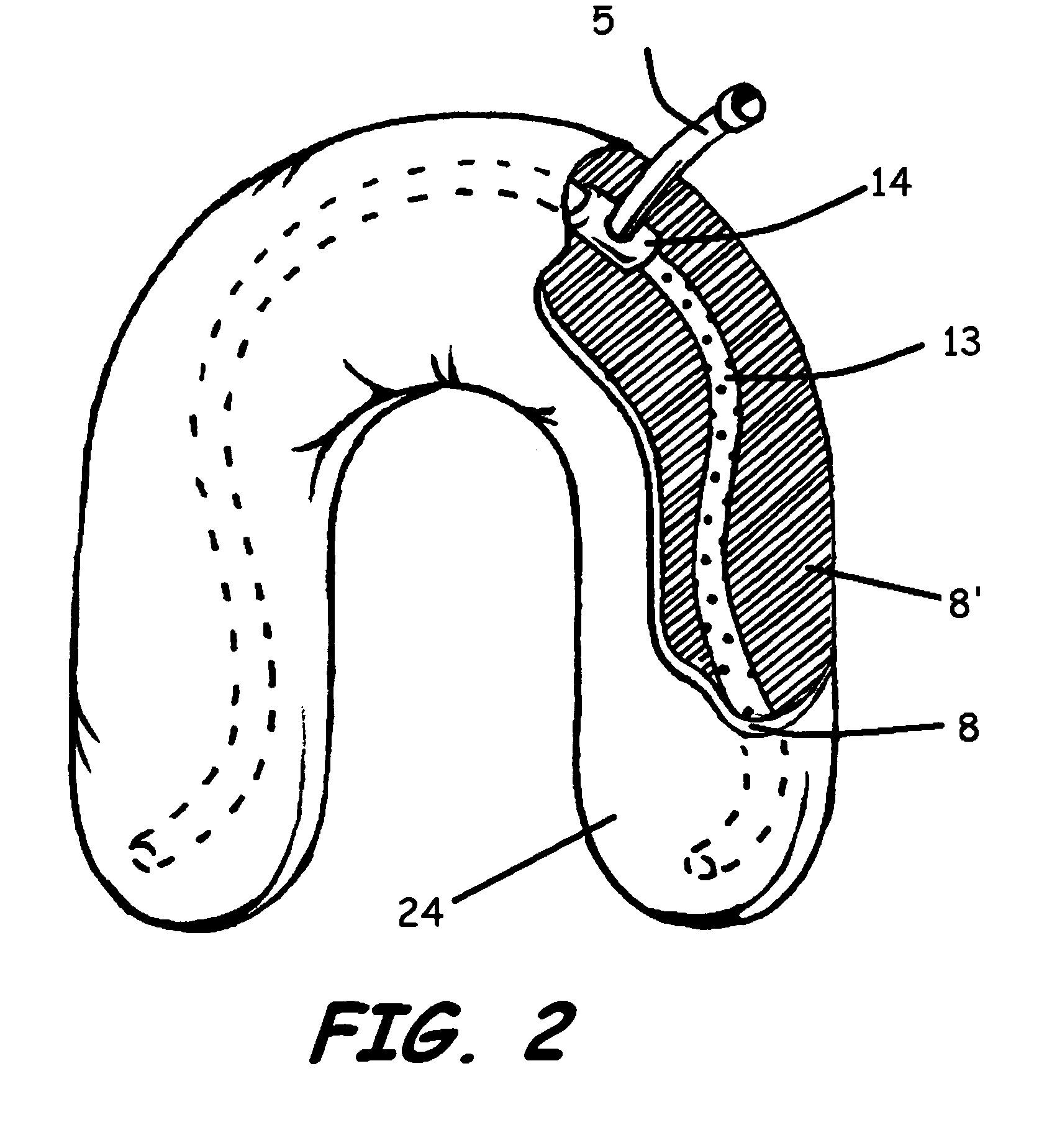Method and device for automatic buoyancy compensation for a scuba diver or underwater device while in any orientation
a technology of automatic buoyancy compensation and underwater equipment, applied in underwater equipment, waterborne vessels, transportation and packaging, etc., can solve the problems of increasing the effort level of divers, increasing the risk of injury or death, and increasing the difficulty of divers to adjust the buoyancy. , to achieve the effect of reducing the effort level of divers, increasing safety, and conserving air
- Summary
- Abstract
- Description
- Claims
- Application Information
AI Technical Summary
Benefits of technology
Problems solved by technology
Method used
Image
Examples
Embodiment Construction
[0026]The present invention discloses a novel method for automatic buoyancy compensation of any underwater object, including a human diver. The preferred embodiment allows the diver to control the automatic buoyancy compensator via control inputs. In addition, any of a number of means to communicate status back to the diver (visual, auditory, tactile) may be employed to inform the diver of current conditions and thus facilitate the diver's control of the apparatus.
[0027]FIG. 1 shows a schematic representation of a preferred embodiment of the entire buoyancy compensation system intended to be worn and used by a human diver. Display / input module 1 allows the diver to provide control inputs to control module 3 and to observe status information produced by control module 3. The flow of control settings and status information are indicated, respectively, by the arrows from display / input module 1 to control module 3 and from control module 3 to display / input module 1. Control module 3 may...
PUM
 Login to View More
Login to View More Abstract
Description
Claims
Application Information
 Login to View More
Login to View More - R&D
- Intellectual Property
- Life Sciences
- Materials
- Tech Scout
- Unparalleled Data Quality
- Higher Quality Content
- 60% Fewer Hallucinations
Browse by: Latest US Patents, China's latest patents, Technical Efficacy Thesaurus, Application Domain, Technology Topic, Popular Technical Reports.
© 2025 PatSnap. All rights reserved.Legal|Privacy policy|Modern Slavery Act Transparency Statement|Sitemap|About US| Contact US: help@patsnap.com



